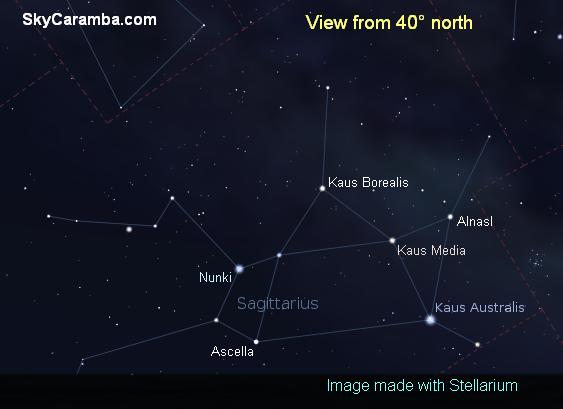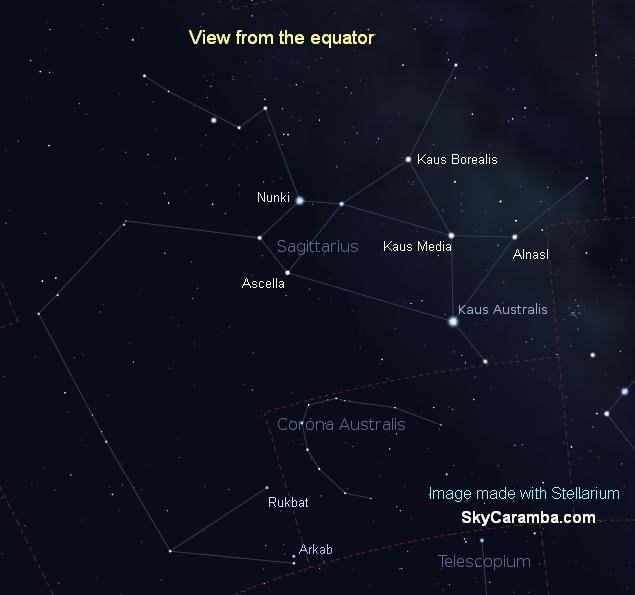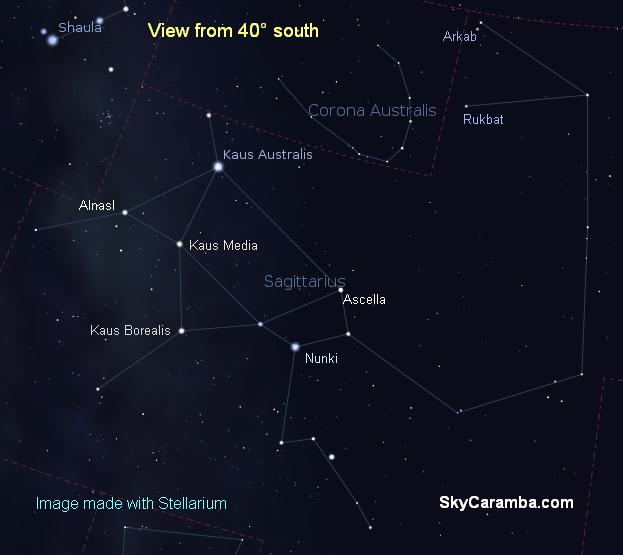Astronomy blog for the week ending June 25, 2011
A half-man half-horse trots across the summer skies. Much of the world gets only a fleeting glimpse. Sagittarius is a southern constellation. From the northern half of North America, Europe, and other places at those latitudes, part of Sagittarius is up for just a few hours.
Sagittarius, sometimes known by other names, has been an arrow shooter for thousands of years. In recent centuries, part of this constellation has come to be known as “the teapot”. Those of us too far north to see all of Sagittarius can see only the teapot.
The stars of Sagittarius have mostly Arabic names. For three of them, one Arabic word is combined with Latin words to clarify their locations. Kaus Borealis, Kaus Media, and Kaus Australis are the northern, middle, and southern bow stars, respectively. Kaus Borealis is the top of the teapot’s lid if you prefer.
Once you know which stars they are, it’s not hard to imagine a curved line linking them as to form a bow. It’s also easy to remember Alnasl, the arrow’s tip where the teapot spout would be.
Nunki would seem to be the arrow’s tail. However, that’s actually an ancient Babylonian name for a capital city in the sky. It’s in the teapot’s handle. At the bottom of the handle is the unflatteringly named Ascella. That’s Latin for armpit and is where our archer’s armpit would be.
For those who get to see the rest of Sagittarius, Rukbat (knee in Arabic) is the star in the creature’s knee. And he has an Arkab, or Achilles tendon.
Centaur is a word for a half-man half-horse creature. But since another constellation is already named Centaur, we should be careful using the word. Sagittarius is a centaur, but don’t call it Centaur or the Centaur. Call it the Archer instead.
One way to find Sagittarius is by looking east of Scorpio, the subject of a recent SkyCaramba blog. Most viewers will look southward to find Scorpio, and Sagittarius will be a little to the left. If you’re far enough south that Scorpio is to the north, look to the right.
The teapot’s on the meridian (a line overhead going from north to south) around midnight local time (add an hour for summer time if you do that in your location) at the end of June. Subtract an hour for every 15 days after that to determine when it will be highest in the sky. By the middle of August, it’ll be there at 9pm.
Sagittarius is worth a look through binoculars. With minimal light gathering power, you should be able to see about a dozen star clusters and nebulae and thousands of faint stars! Sometimes, you’ll come across relatively dark streaks where interstellar dust blocks from view whatever’s behind it. The densest star field is in the area of the bow and arrow. Maybe in the right conditions, that spiral of the Milky Way Galaxy will look like steam from the teapot.


